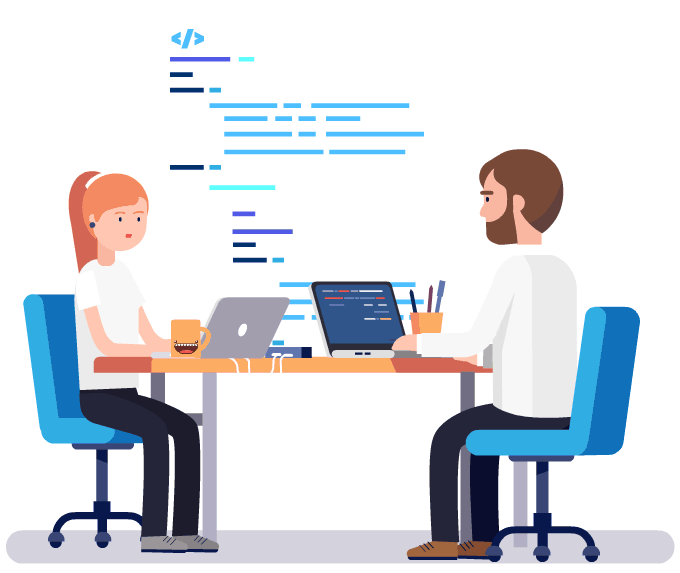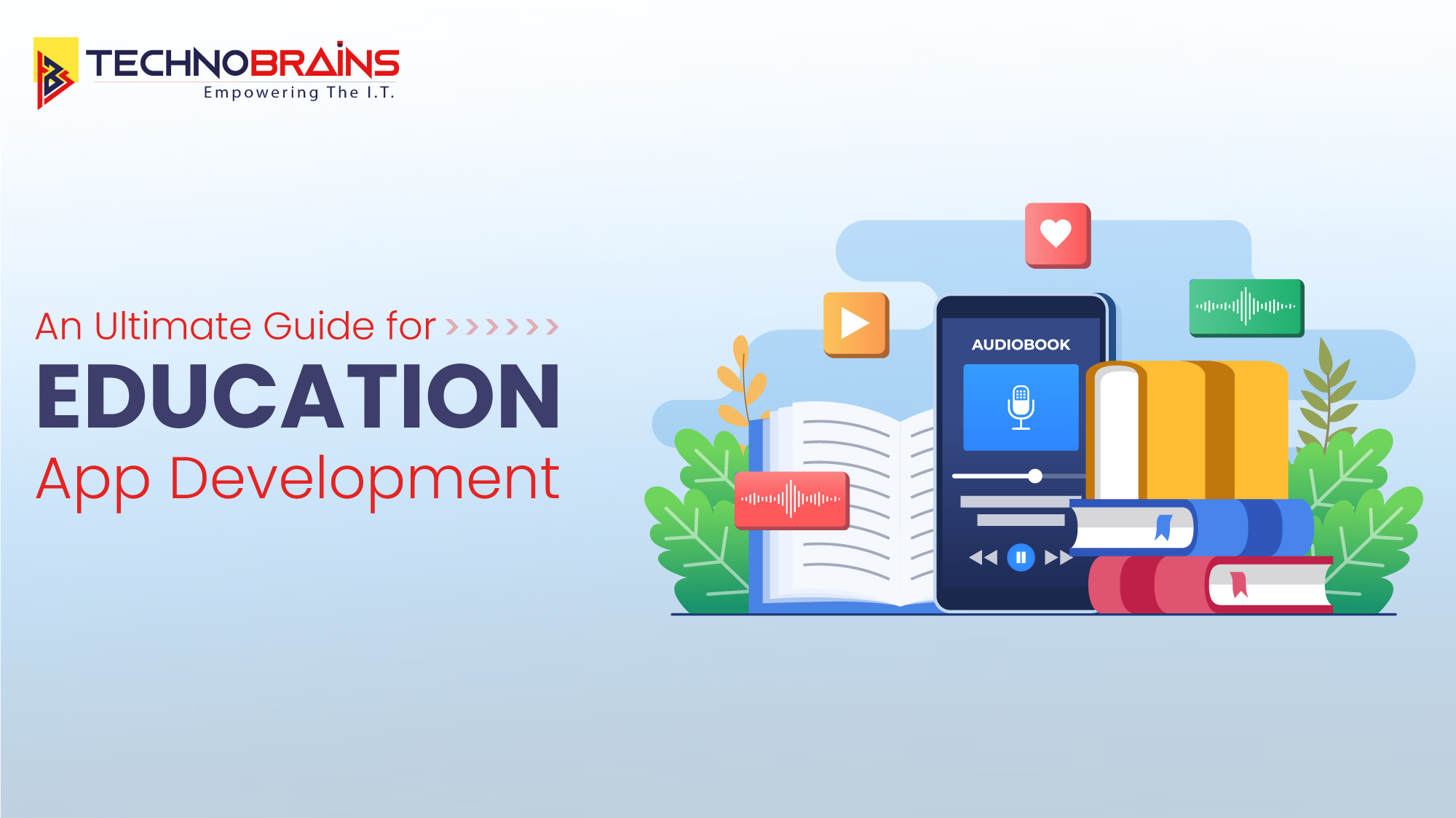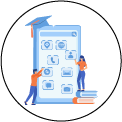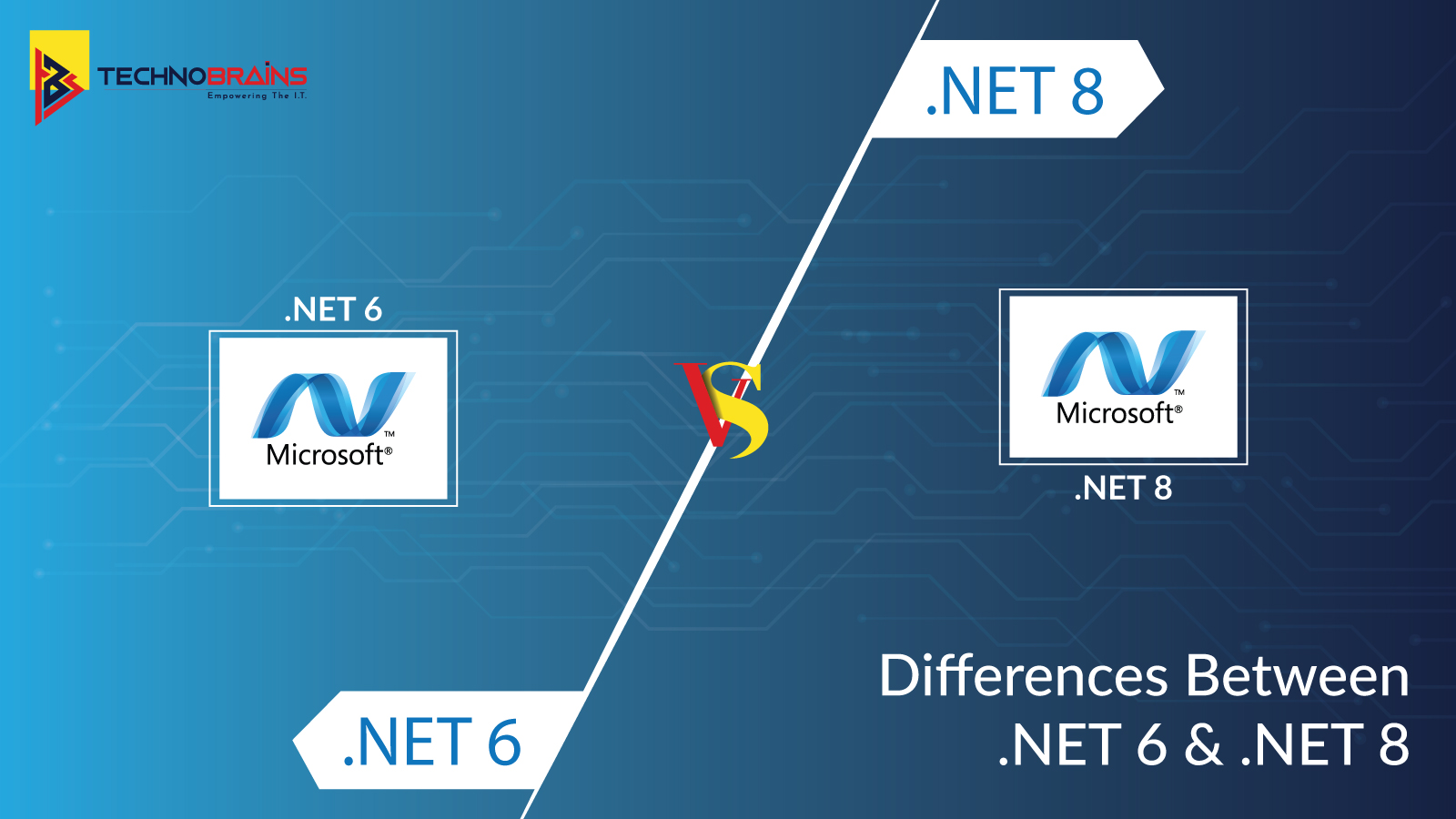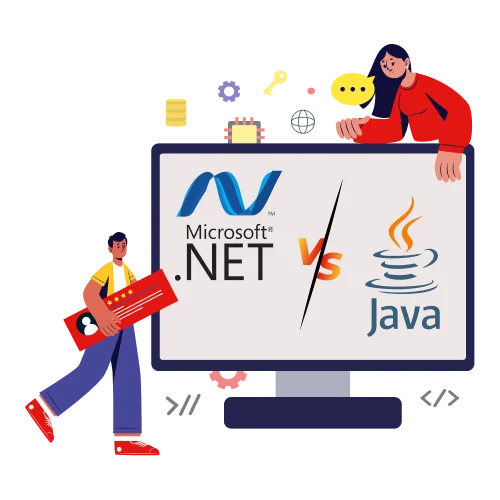40 Hours Free Trial Week Developer
Get Free Trial Week Developer Access, Try Before You Hire. Click Here to Claim Now
The demand for educational apps has surged because the whole perspective of the education sector is hugely transforming, driven by the influence of rapid technological advancement. Consequently, these apps serve students by providing personalized learning experiences, flexibility, and increased interactivity. Be it schools, universities, or even corporate training, or self-learning platforms, today’s digital era cannot be imagined without such educational apps.
In this ultimate guide to education app development you will learn all about education tech app development, and types of educational applications, and then outline in detail what’s called “steps to develop an educational app”. It also includes some key traits, the potential costs for an app to be built, and, along with it, some insights on why TechnoBrains is the ideal partner to accompany this journey.
What is Educational Application Development?
Education application development means the design, develop, and deployment of mobile or web applications, which enhance learning by providing educators and learners with user-friendly, interactive tools. These could probably range from elementary school children apps to toweringly professional ones.
The idea behind education app development is to offer solutions that can efficiently meet the diversified needs of both students and academics for newer ways of delivering, absorbing, and managing educational content. As remote learning and virtual classrooms gain momentum, this opens up accessibility to quality education even from remote corners.
Understanding Different Types of Educational Applications
These educational applications may come in different forms for different learning environments, different levels of education, and topics of learning. Here’s an overview of different types of educational apps:
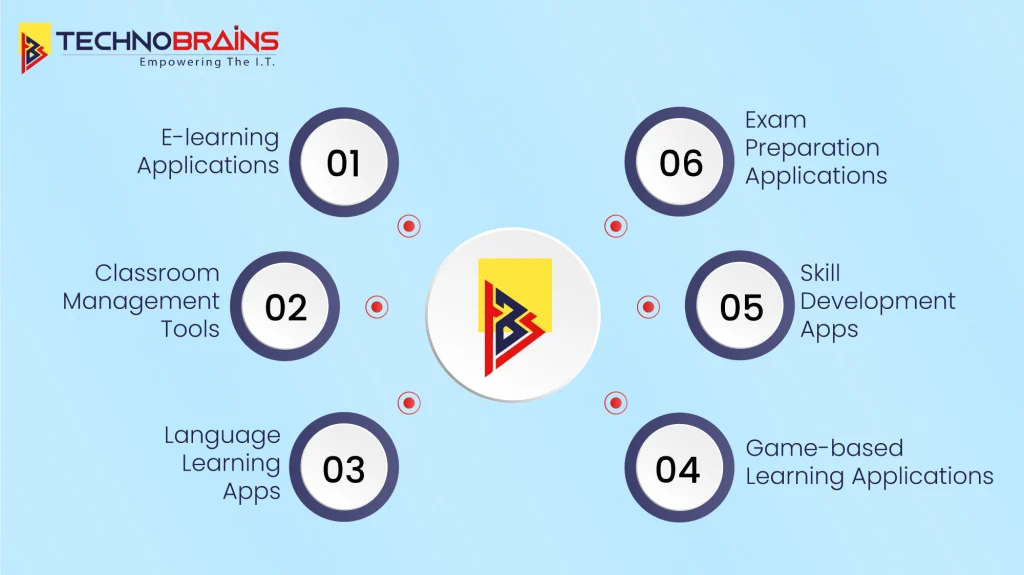
E-learning Applications
This is one of the types of education apps which is designed to support formal education through the provision of courses online, training materials, and certification. Examples include: classes by Coursera, Udemy, and Khan Academy-which provide learning modules on various subjects; the student progresses at his own pace.
Classroom Management Tools
Such classroom management applications provide teachers and administrators with the necessary facilities to manage classrooms effectively or efficiently. These apps usually feature a set of functions, including but not limited to keeping attendance records of students, tracking students’ grades, submitting assignments, and real-time communication between teachers, students, and parents.
Language Learning Apps
These include language learning applications, such as Duolingo and Babbel, which offer lessons in select languages through interactive exercises, quizzes, and games to help one learn. They are very popular among users who intend to learn new languages at their convenience.
Game-based Learning Applications
These include some aspects of game-like elements, like points, levels, and rewards, which make learning fun and engaging. Examples include Kahoot and Quizlet, where, with these apps, learning is more interactive, especially for younger students.
Skill Development Apps
These applications are targeted at helping users learn special skills, whether that is coding, photography, or drawing. The main focus of such applications is hands-on learning of real-life skills.
Exam Preparation Applications
Test preparation apps offer test practices, quizzes, and study materials to prepare for exams, like SATs, GREs, GMATs, and even school entrance tests. Examples include every Quizlet or GradeUp app intended to sell learning modules based on tests. Interested in building an app like the ones listed above? Learn more about our custom educational software development services.
Step-by-Step Guide to Successful Education App Development
The creation of an educational app is a systematic approach, where everything from development to acts must correspond to the user’s needs. This is a step-by-step guide on how to create an education app:
Establish the Purpose and Identify the Target Audience.
First, understand the application’s purpose and the target group it will be intended for. The key questions to ask are:
- What problem does your application solve?
- For whom is the app targeted: schoolchildren, college students, or professionals?
- How does this app act to facilitate learning?
This basic clarity will lead the rest of the development.
Research Competitors and Market Trends
Researching the existing competition, and connecting with the latest trends, provides insight as to what works currently and where the gaps are. This may be as simple as looking at some trending applications in the education space and reviewing their features, user experience, and design. Understanding the market makes your app stand out and different.
Select the Right Features
Based on your research, determine what features are important for your educational app. Best features of educational apps that would be a must-have are as follows:
- User registration and profile creation,
- Interactive content (videos, quizzes,)
- Engagement push notifications
- Analytics for the user’s progress tracking
- Socially shareable capability
Design UI/UX Focused on Engagement
With a design that is friendly and intuitive to navigate, users are retained. It needs to be simple, attractive, and functional so the users will not be overwhelmed by complicated UI but can focus on learning.
Selecting the Appropriate Technology Stack
The correct technology stack makes for regular app performances. That could be either Java or Kotlin for Android apps, Swift or Objective-C for iOS, and Flutter and React Native are popular cross-platform. Selection of the backend framework, be it Node.js or Django, and databases such as MySQL and MongoDB, will also make a difference in how an app performs.
Development of an MVP (Minimum Viable Product)
First, create an MVP before launching an app. The core features comprise an MVP, which is a basic version of an app with which one can collect user feedback and improvements.
Testing and Quality Assurance
Testing is therefore a very sensitive stage where the application is assessed for bugs, performance issues, and consistency in user experience. This is the beta stage of testing wherever the last irregularities may be worked out in how real user interaction with the app goes on.
Launch and Marketing
Once your application is ready, then it’s the right time to bring it into the app stores. All the targeted audience, with an attractive marketing strategy that includes promotions on social media, email marketing, and partnerships with educational institutions, is guaranteed.
Updates and Support Continuously
It is not that one launches the application and that’s it. Regular updates, new features, performance improvement, and customer support will keep your app on track for its ongoing relevance and popularity.
Key Features of Successful Educational Applications
Following are some Top features in education apps that could promise an educational app’s success and revolve around the usability that improves the learning experience even more:
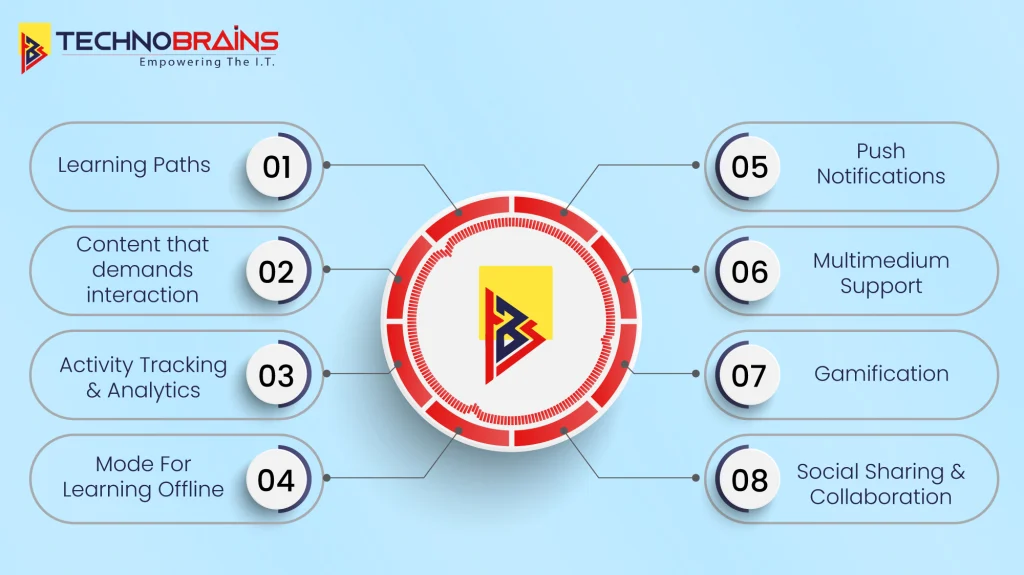
1. Learning Paths
However, the most critical attribute of a modern educational app is the personal learning outcome. The app must be able to adapt to the target group’s learning pace, preferences, and needs by recommending and offering adjusted content.
2. Content that Demands interaction
An educational app should offer its users an interactive platform by offering videos, quizzes, games, and assignments. The more interactive the content is, the more the user will be engaged and able to retain it.
3. Activity Tracking and Analytics
Allow the user to track his/her progress through visual dashboards, reports, and analytics regarding their learning or course. It may include some enabling features that use progress bars, percentage completion, and grade tracking to keep users on track.
4. Mode For Learning Offline
This is particularly important for areas or countries where the internet service is poor. This allows users to download learning material and then access it without an internet connection.
5. Push Notifications
These notifications remind users to complete the lessons, remind them of new content, or even push motivational quotes.
6. Multi Medium Support
These educational applications should be enabled to support manifold formats-text, audio, video, and images so that it will be easy for different kinds of learners.
7. Gamification
Thus, learning can easily be made quite fun and engaging, especially for younger users with the integration of rewards, badges, and leaderboards into learning.
8. Social Sharing and Collaboration
Social learning features can be enabled for social sharing and collaboration-discussion boards or study groups that allow the learners to learn from each other, share insights, and create community.
How Much Does It Cost to Develop an Education Application?
Accordingly, the education app development cost may differ in different cases depending on the following factors: The complexity of an application, its technology, and the features you would wish to implement.
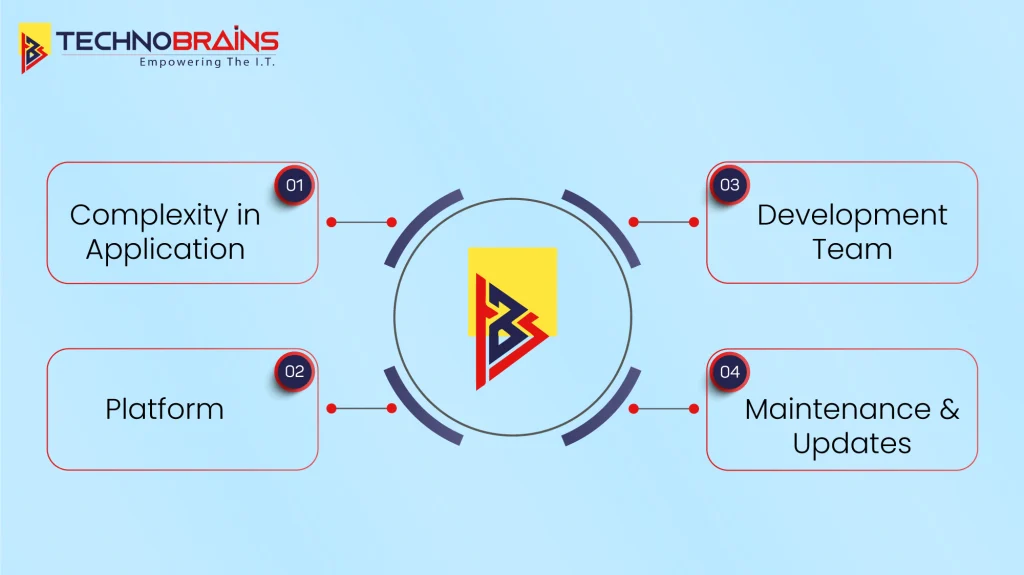
Complexity in Application
The price for a simple to complex application differs one from another. In case you want to add some advanced features, such as AI-driven personalized learning or gamification.
Platform
Also, the cost of developing An education app depends directly on whether you develop the app for one platform, Android or iOS, or both. Native applications usually cost more to develop than cross-platform applications.
Development Team
It requires an excellent app, coupled with a high-performing professional development team. Where you hire developers determines how much it will cost.
Maintenance and Updates
Moreover, after the release, the work for regular updates, maintenance, and bug fixing will require continued spending. The estimated total cost is dependent on the complexity of the app.
Why TechnoBrains is the Right Choice for Developing Your Education App
We develop high-strength educational apps that drive along with ensuring a seamless learning experience. Here is why you should choose TechnoBrains for education app development project:
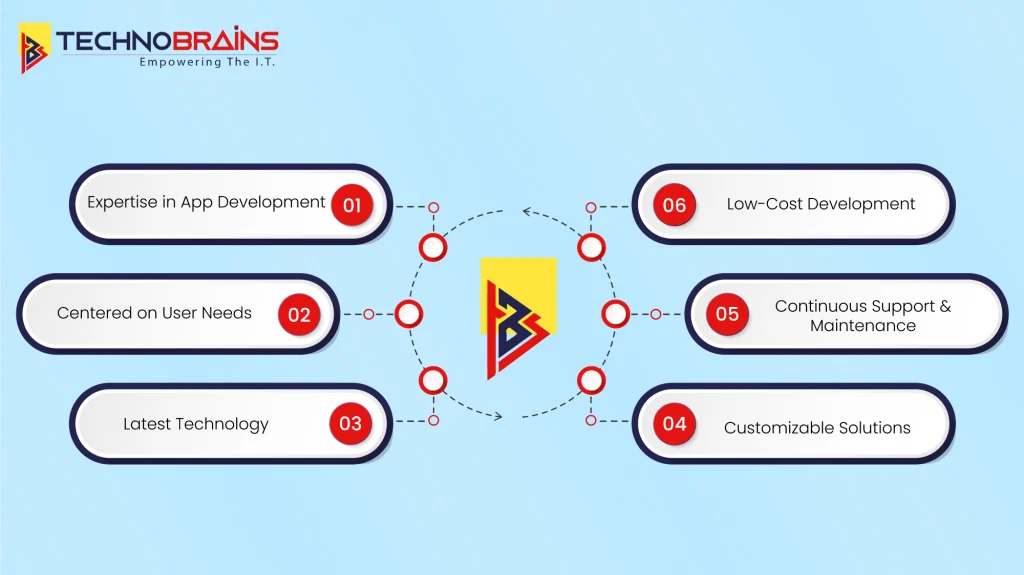
Expertise in App Development
Our team has vast experience developing educational applications targeting a wide variety of audiences, from K-12 students to professionals. We understand peculiar challenges within the education industry and tailor solutions to fit your exact needs.
Centered on User Needs
The experiences of users matter utmost, and we try to make any app that we create intuitive, engaging, and easy to use. UX/UI designers create aesthetically pleasing interfaces that also help enhance learning outcomes.
Latest Technology
TechnoBrains stays updated with recent technology. Be it integrating AI for customized learning, making use of cloud technologies for easy access to data, or a feature being available offline; we apply it to your application.
Customizable Solutions
We offer solutions that are easily suited to your needs. Anything from building a simple eLearning system to an advanced application with gamification and social features, we can create an application that captures your vision.
Continuous Support and Maintenance
TechnoBrains gives quality support even post-launch of your app. We ensure that it keeps updating on time with the latest features of the application and performs smoothly with the help of regular maintenance.
Low-Cost Development
We try to make our prices competitive without compromising on quality. We simplify the development processes so that one can develop a quality app within his budget and timeline.
Read Also, Detailed Guide on Why Choose TechnoBrains for Education App Development?
Conclusion
While developing an educational application, one needs to plan, deeply understand the target audience, and implement the latest technologies. Due to this fact, every step performs a significant role in the success of an app: defining the app’s purpose and selecting its key features to choose the right team for app development. Our experience, focus on the user, and utilization of the latest technologies render us the ideal partner for your project. If you are planning to opt for education app development services then consider TechnoBrains.
Still stuck with questions? Contact us today and get all your solutions here.
